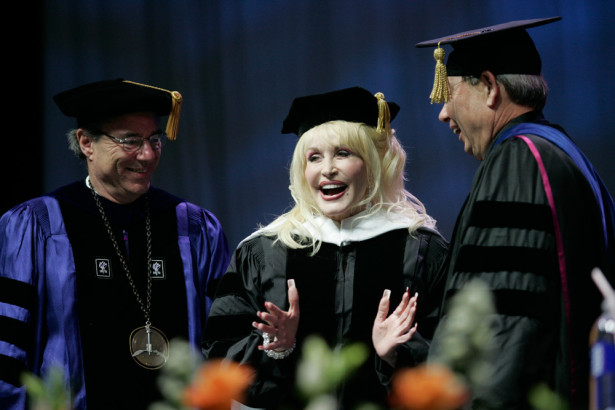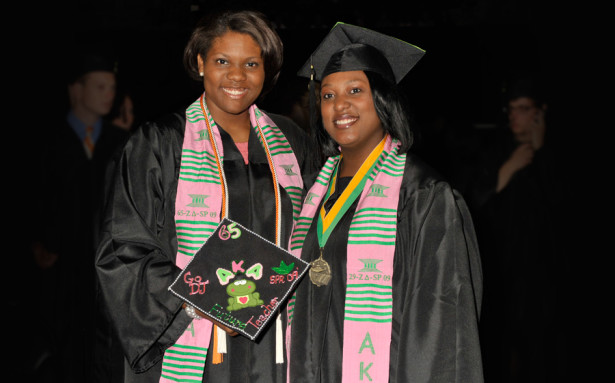By John Lacey
When students don caps and gowns for graduation this month, they are taking part in a tradition that began at Oxford University in 1432—60 years before Columbus set sail across the Atlantic. The first baccalaureate ceremonies hundreds of years ago continue to inspire the dress of today’s graduation ceremonies.
While clinging to venerable rituals, the campuses and institutes of the University of Tennessee also have forged their own, newer traditions. From the “bloody brick ceremony” at an agency of the Institute for Public Service to the recognition of first-generation college graduates at UT Martin, the university celebrates and honors students in a rite of passage in unique ways. We highlight some of these celebrations and traditions.



Video: Dan Anselmenr, LEIC and NFA Traing Consultant explains the origin and meaning of the “blood brick” tradition.





Baccalaureate Regalia

Mortarboards
The history of the mortarboard cap remains a bit of a mystery. One legend, according to historian Helen Walters, dates back to ancient Roman law that stated a slave was deemed free by being allowed to put on a cap. And so at Oxford University in the Middle Ages, the cap of the master of arts signified independence, and the wearer was bound to don the cap at all university ceremonies.
Tassel
The tassel is fastened to the top of the mortarboard or cap. Oxford lore maintains that, in 1340, students mended their hoods with colored thread that represented their studies. The “tassel ceremony,” or the moving of the tassel from right to left to signify graduation, is a more modern phenomenon.

Gowns
In the 12th century, wearing long robes or gowns distinguished the high society and wealthy from the lay folk. Gowns also were useful on a chilly day. Both students and faculty wore gowns to classes in the United States up until the Civil War.

Honor Cords and Stoles
Universities borrowed the wearing of cords and stoles from the early Christian church as clergy would wear them to signify being set apart or achieving special significance. That tradition continues to this day as both honor cords and stoles can be worn to signify academic achievements or special significance. Stoles, in particular, represent organizations that students have been involved with during their time at the university.

Diploma
Originally, the diploma was handwritten in Latin on thin sheepskins, and at many institutions the student had to pay the university president for his signature.









Master’s and Doctoral Regalia

Tassel
Master’s and doctoral students wear tassels on the left signifying their previous degrees. Doctoral tassels are the only ones that should be gold- or metallic-colored.

Hoods
The academic hood comes from humble beginnings as a head-warmer worn by monks in medieval England (were the ancient buildings were quite drafty). By their length and color, hoods now symbolize the wearer’s school, degree and field of study.

Gowns
Doctoral gowns, the most elaborate of academic gowns, distinguish their wearers as having achieved the highest level of scholarship.

Chevrons
Chevrons are distinctive to doctoral students and represent the academic discipline of the wearer. They originated as part of the medieval costume.
Trim Color
Trim color is another medieval carry-over. Colors informed lay folk of the wearer’s importance and set them apart as having achieved a higher status.
Sources:
Harris, Alice L. Academic Ceremonies: A handbook of traditions and protocol. CASE, 2005.
Walters, Helen. The Story of Caps and Gowns. New York: E.R. Moore, Co., 1939.



